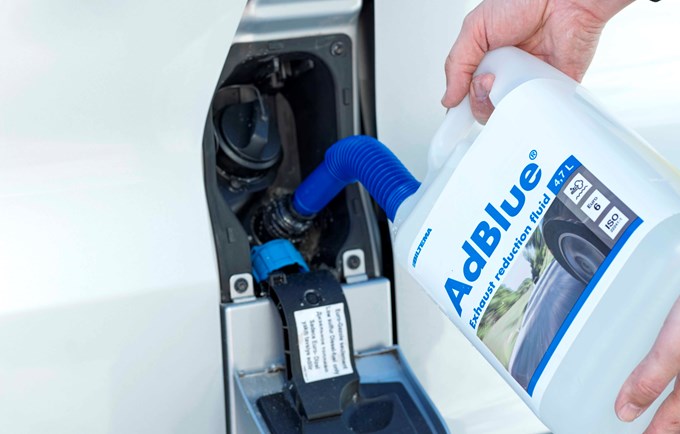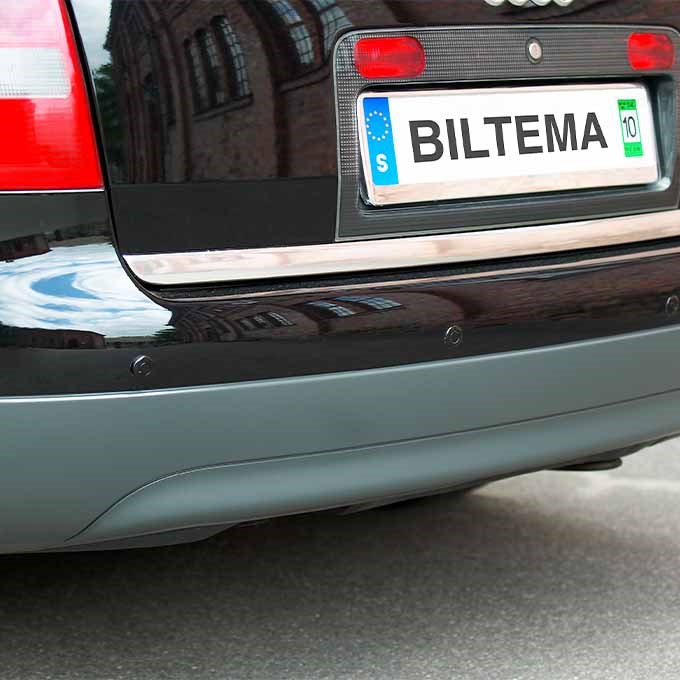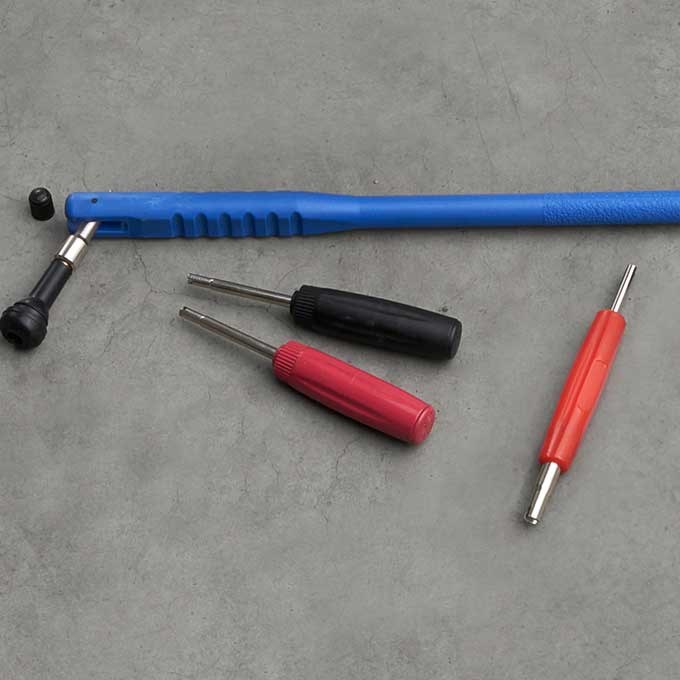Do you use AdBlue® in your diesel car?
What is AdBlue®?
AdBlue is a colourless, alkaline liquid used in diesel vehicles with SCR exhaust emissions control technology. AdBlue is a solution consisting of deionised water and urea, and is completely non-toxic and harmless to humans and animals.
When refilling AdBlue in your vehicle, it is poured into a separate tank designed to hold the liquid. This container is usually clearly marked with a blue tank cap.

Exhaust emissions control with SCR technology
SCR stands for selective catalytic reduction and the technology is present in most passenger cars and heavy vehicles with diesel engines.
Modern diesel engines with SCR technology require AdBlue for exhaust emissions control to work efficiently. SCR exhaust emissions control technology, together with added AdBlue, cleans diesel engine exhaust gases and reduces emissions of harmful nitrogen oxides by reducing these to nitrogen and water vapour.
Euro 6 emission standard
There is an EU standard called Euro 6, which is a directive that regulates emission standards for vehicles. The purpose of Euro 6 is to make emissions from diesel engines as clean as those from petrol vehicles. As a result, all diesel vehicles from model year 2015 and onwards must be equipped with SCR technology. And SCR technology needs AdBlue to work.
How does AdBlue® work?
So, how does AdBlue actually work?
AdBlue is injected into the exhaust system before the exhaust gases pass through the SCR catalytic converter. In the catalytic converter, AdBlue converts the harmful nitrogen oxides into harmless nitrogen and water vapour, which are then emitted. Without the SCR catalytic converter, diesel engines emit high levels of nitrogen oxides into the air, which adversely effects human health and contributes to the eutrophication and acidification of our environment.
Refilling AdBlue®
AdBlue is an easy product to use. However, it must be used correctly, since it is used with an SCR catalytic converter which is sensitive to contaminants. You must therefore never add water to your AdBlue solution because this can damage the SCR catalytic converter. When the AdBlue in the tank starts to get low, a warning light will come on and you will need to refill it as soon as possible. Driving with an empty AdBlue tank can damage your engine system.
NOTE! AdBlue is not a fuel additive. It must be poured into a separate tank in the vehicle.
Important to remember with AdBlue
- Always pour AdBlue into the tank marked for AdBlue.
- Make sure there is never diesel in the AdBlue tank and that it is always intact and closed tightly.
- Use AdBlue equipment when refilling AdBlue, and make sure to keep the equipment free of dirt.
- Use AdBlue or demineralised water to clean your AdBlue equipment.
- Never mix AdBlue with other liquids.
- If you spill AdBlue, rinse thoroughly with water.
- Protect your AdBlue from direct sunlight, temperatures above 30 °C and below -11 °C.
- If your AdBlue overheats, spray cold water on the sealed container.
- If your AdBlue freezes, you can gently warm the closed container to thaw the liquid. The AdBlue can be used again after it has thawed.




